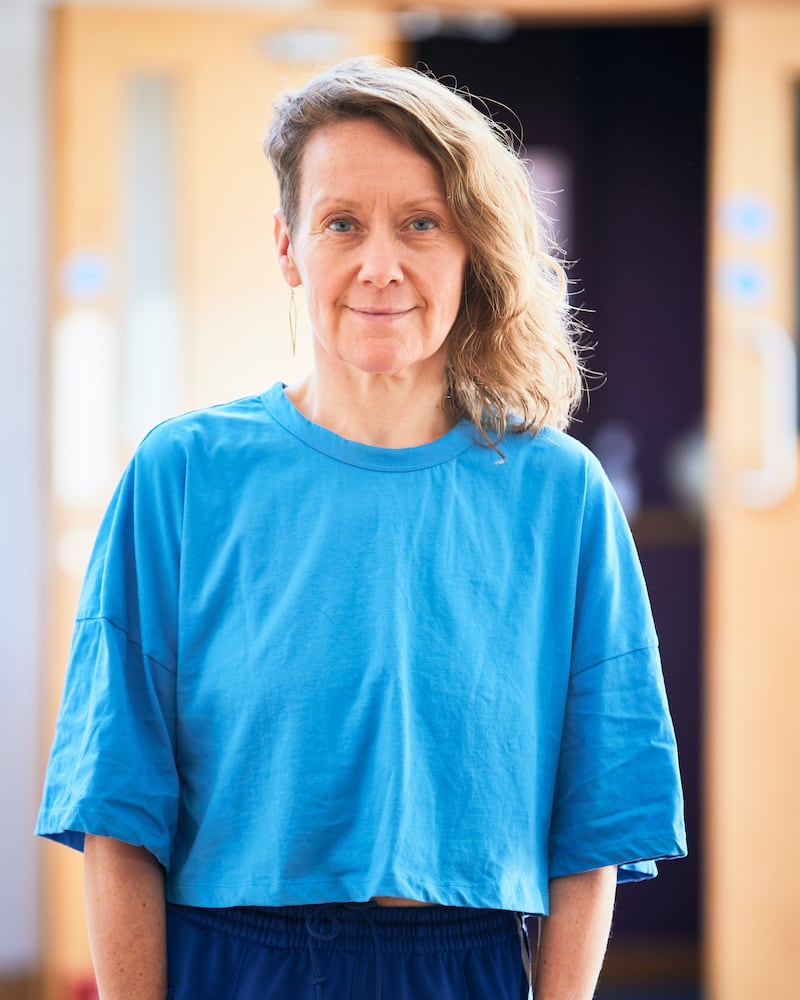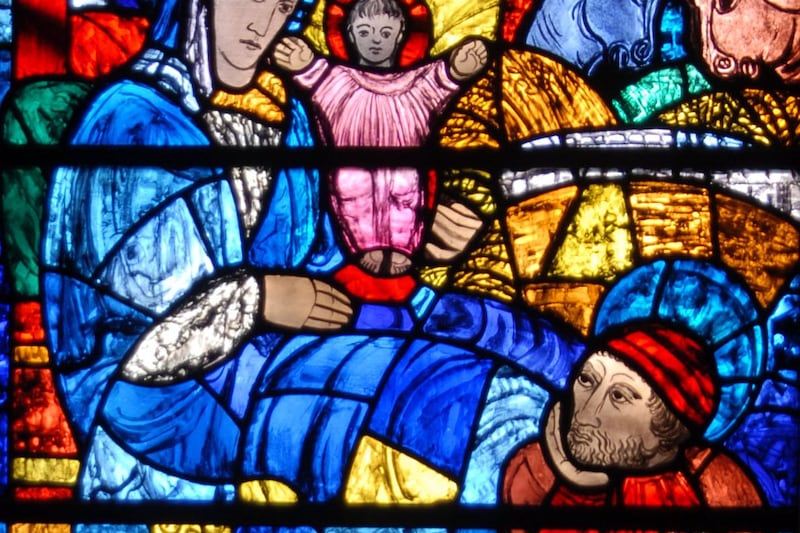In Irish, a ciseach is a path created by past footsteps or a causeway made of wattled sticks. The word also means “a mess”. As a description for Catherine Young’s latest dance, about our loss of connection to the land, the double meaning is apt. Ciseach: An Embodied Manifesto will show both how Earth is a mess and how, by following the paths of our ancestors, we can repair that relationship between ourselves and the land.
Ciseach’s double meaning certainly doesn’t apply to Young’s artistic career. Rather than follow any predetermined path, the Kerry-based choreographer has bushwhacked an individual route to create inclusive, socially engaged works that give voice to those on the margins of society. Her back catalogue includes dances created with people in a woman’s refuge and in the direct-provision system, as well as collaborations with artists from Palestine.
She doesn’t see the shift in focus to Earth as a sudden change. “Looking back at previous works, I can see that it all comes back to land and our relationship with the land,” she says. Diminishing natural resources, territorial claims and forced migration are intertwined with the climate emergency.
The fractured relationship with the land that she sees in Ireland contrasts with her experience in Africa, a continent she has visited over more than 20 years to study its dance. In January, in a fishing village in Senegal, she saw the central importance the community placed on the sea and the land as providers. Villagers kept a watchful eye on the balance between how much can be provided and how much should be consumed – and have managed to prevent any attempt to plunder those resources, chasing away a Chinese fish factory and mining companies.
READ MORE
“These small villages can have a massive environmental impact against big companies. And it struck me that we have lost that. Because they’re so connected to their land, it is natural to band together when it’s threatened.”
Young was also struck by two books during her research for Ciseach: Braiding Sweetgrass, by Robin Wall Kimmerer, and Songlines, by Lynne Kelly.
Manchán Magan writes about how the Famine led to distrust of the land, because it didn’t serve us. Is that why we are disconnected from our own culture?
“Braiding Sweetgrass has kind of become my bible,” Young says. “Kimmerer is a Native American environmental biologist, and she writes about Native American cultures and their deep connection to the land. She writes that if you want to restore nature and restore the environment, then you’ve got to restore that relationship with people and the land. Because otherwise it’s kind of futile. Yes, you can talk about recycling and electric cars, but if we’ve lost the essence of that connection, then all that stuff just seems like a lot of work.”
Kelly is an Australian writer. “She goes back to the Aboriginal cultures and their songlines and their connections with the land. They are oral cultures, just like African cultures, so all the knowledge is in the songs and dances. I love being in Africa, because dance is not this kind of entertainment thing relegated to the fringes of society. There are rhythms for everything, whether it’s initiations or harvests. I know that might seem very quaint to us in the West, but for them it’s so critical and at the centre of their life.”

While she was researching Ciseach, Young took stock of her relationship with Irish culture. It wasn’t great. She had never studied Irish traditional dance, and her language skills were rusty, so she began to reconnect with language, movement and music. Reading books by Manchán Magan revealed the strong connection between the Irish language and place.
“In Irish, the landscape is in the language. In one of his books, Magan writes about how the Famine led to distrust of the land, because it didn’t serve us. Is that why we are disconnected from our own culture? We might be interested in the myths of Native American, African or Aboriginal cultures, but when it comes to our own, we might think of them as a bit hokey.”
Instead, she found depth and inspiration in particular from the ancient Irish-language poem The Song of Amergin. According to legend, it was uttered spontaneously by the Milesian or Gael prince Amergin when he first set foot on the Iveragh peninsula, in Co Kerry. Beautifully simple, it manages to bridge self and nature as Amergin claims affinity with the sea and wind, deer and salmon, dewdrop and lake.
[ Refugees dance their way to freedomOpens in new window ]
It is important in literary history: Robert Graves claimed that “English poetic education should, really, begin not with The Canterbury Tales, not with the Odyssey, not even with Genesis, but with The Song of Amergin”. Nowadays the poem also strongly suggests an ecological idealism that Young has channelled in Ciseach. In the performance it is set to music by Mícheál Ó Dubhghaill.
Once we stop regarding the land, or our culture, as essential to our lives, then it can be destroyed, Young says. “It’s the same with immigration. If you don’t know people from those cultures, you can ‘other’ them. If you don’t have a relationship, then it is easy to alienate and cause division.” To counter this, Young created the Welcoming Project in 2016, an ongoing community dance programme that brings together migrants, refugees, asylum seekers, professional dancers and local participants.
Three productions have appeared alongside numerous workshops. Welcoming the Stranger was performed on Banna Strand, in Co Kerry, as part of the 1916 centenary celebrations, and again in 2017 at Ramallah Contemporary Dance Festival, in Palestine, with performances in both Ramallah and Jerusalem. It Takes a Village was commissioned by Kerry County Council and Siamsa Tíre for Culture Night 2017, and Le Chéile was performed in Dingle in 2019.
[ Members of Irish dance community seek freedom for Palestinian friendOpens in new window ]
Young returned to Ramallah in 2019 with the film-maker Luca Truffarelli to create footage for part of a live dance performance, Floating on a Dead Sea. The plan was to show everyday life in the West Bank, including the denial of basic rights and the concomitant stifling of dreams and aspirations. Covid got in the way, so instead they made a documentary. As restrictions lifted, the live dance was finally performed in 2022. Later this year the documentary and the dance will be presented side by side during an Irish tour.
“We’ll really to have a look at that show in the light of where we are now,” Young says. “I recently talked a lot to Palestinians, because the first question was, should the show even go ahead? Based on the Palestinian feedback, it’s important to put the show out and to share what’s going on. It’s all set in the West Bank. We didn’t get to go to Gaza, because we weren’t allowed. But everything that’s in the show is still happening, just much worse.”
In all of her output, Young relies on the primacy of the body. “I do a lot of work with asylum seekers and refugees, and people are really pumped after dancing for an hour to live drumming. There is the reason why the indigenous cultures were doing it. The body doesn’t lie. It’s a famous quote by [the US choreographer] Martha Graham, but it’s really true.”
Ciseach: An Embodied Manifesto, performed by Catherine Young Dance, is at Project Arts Centre, Dublin, from Thursday, June 20th, to Saturday, June 22nd

















